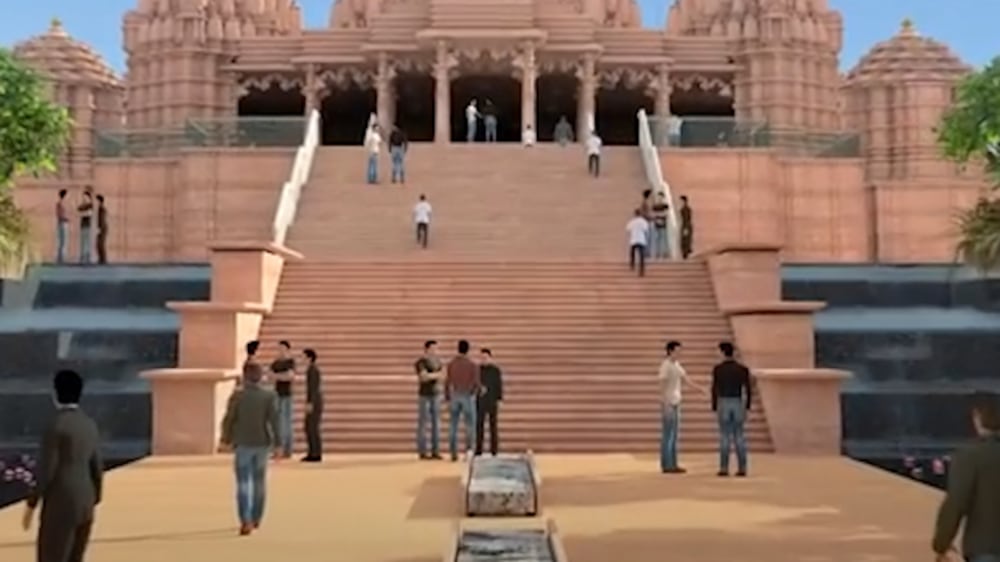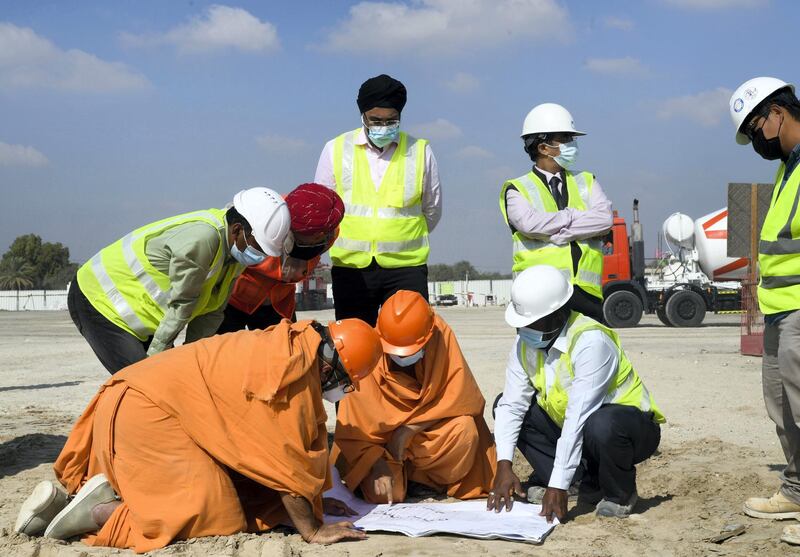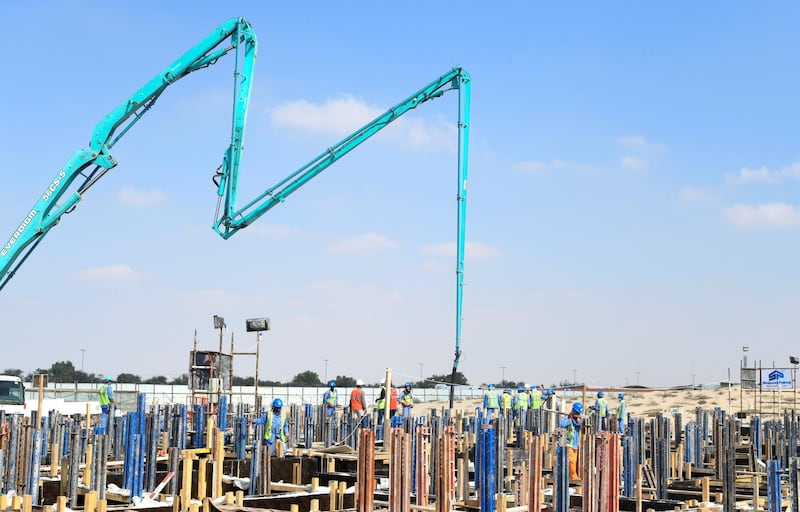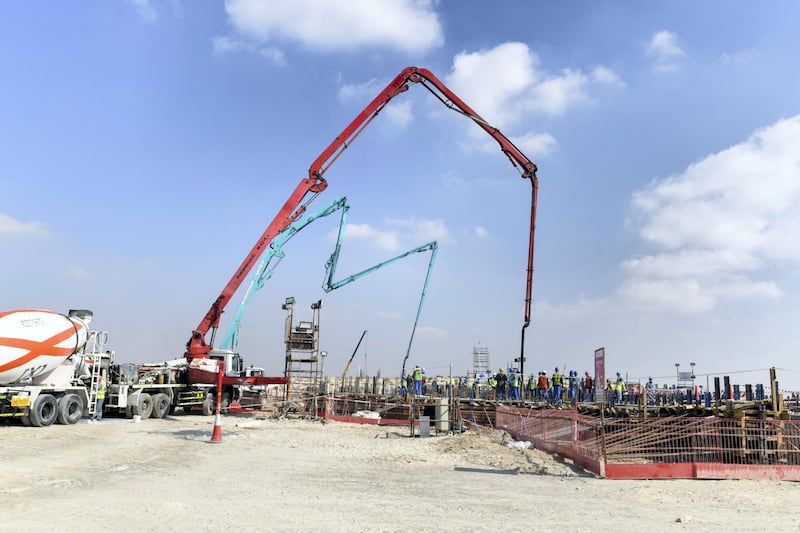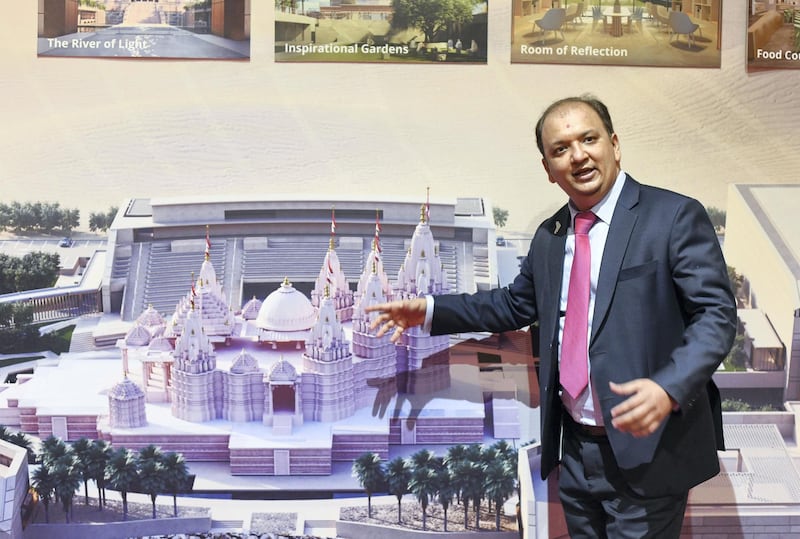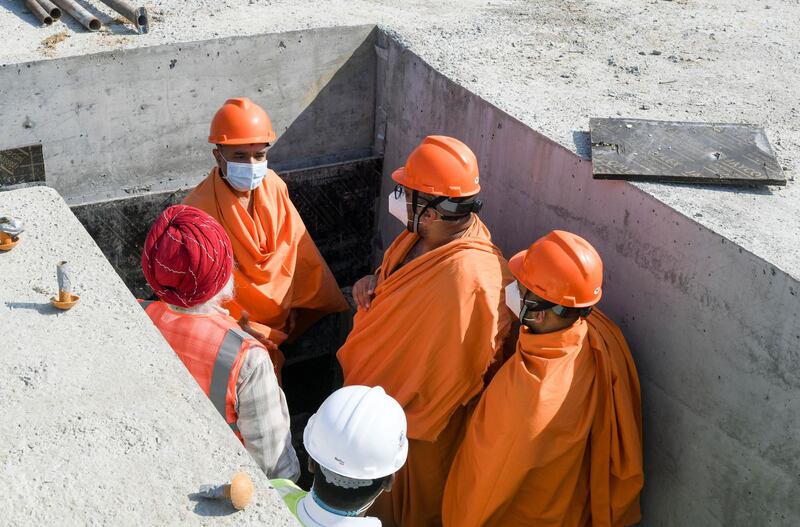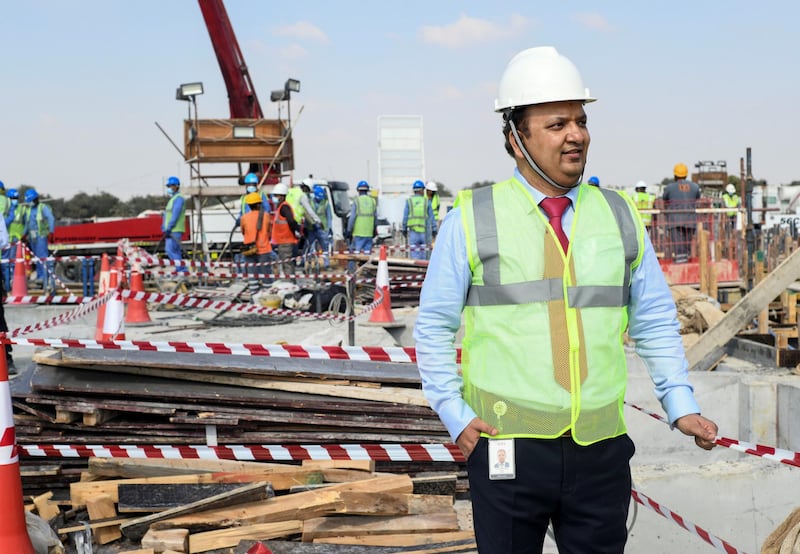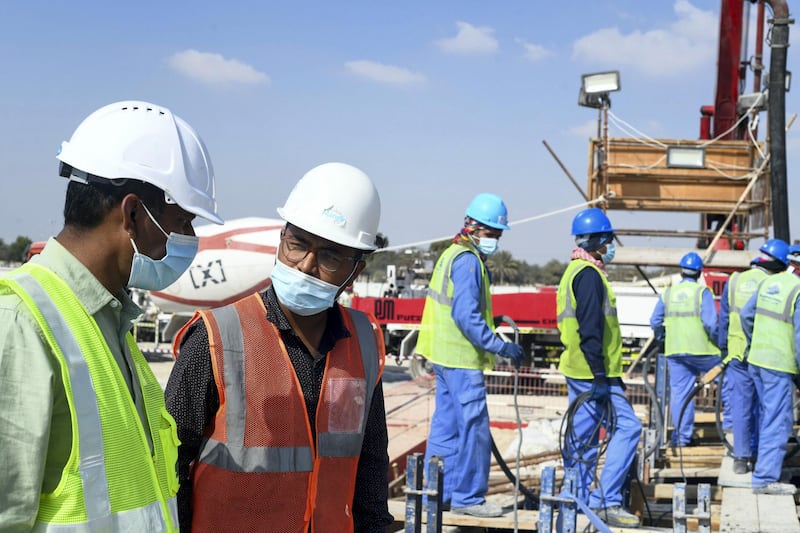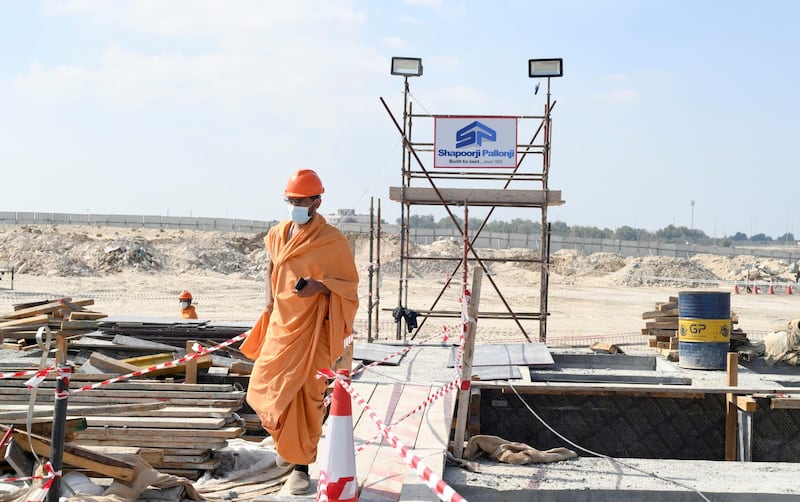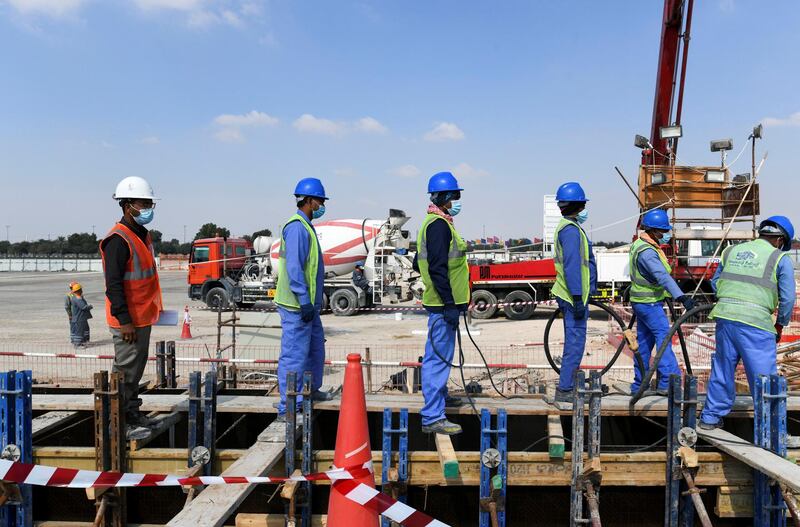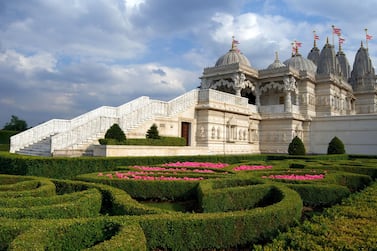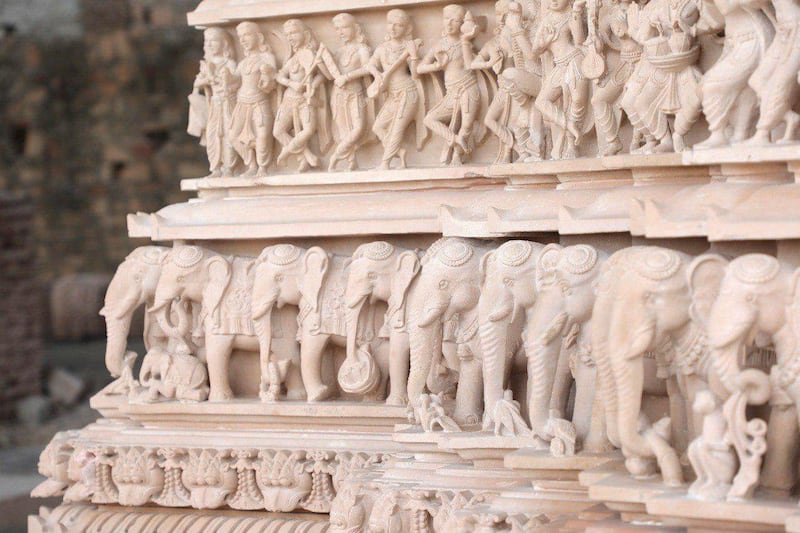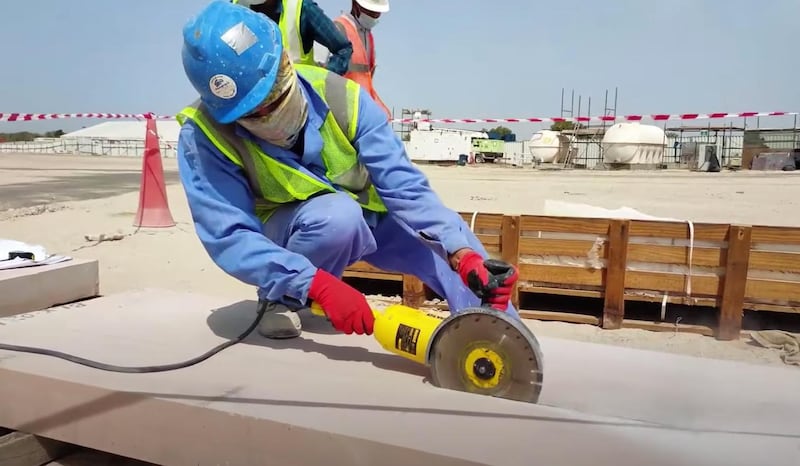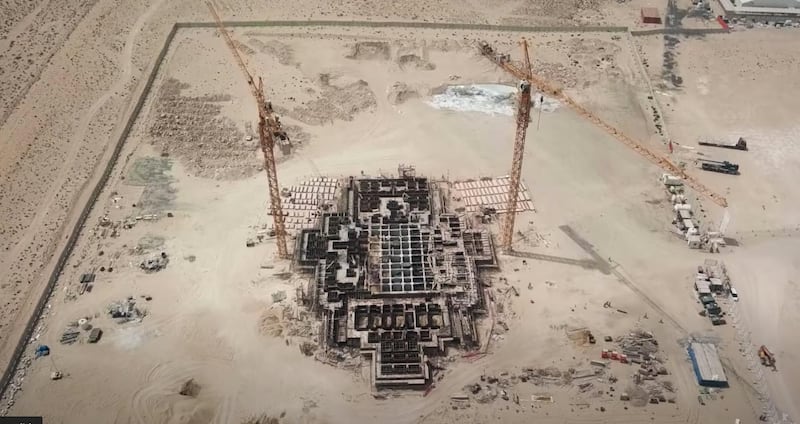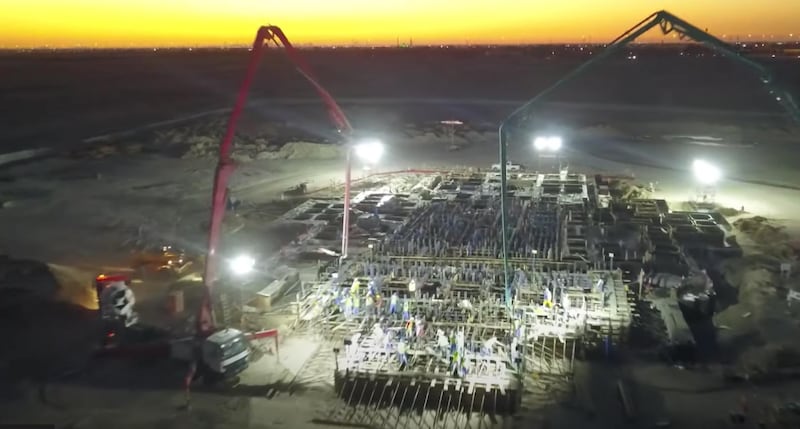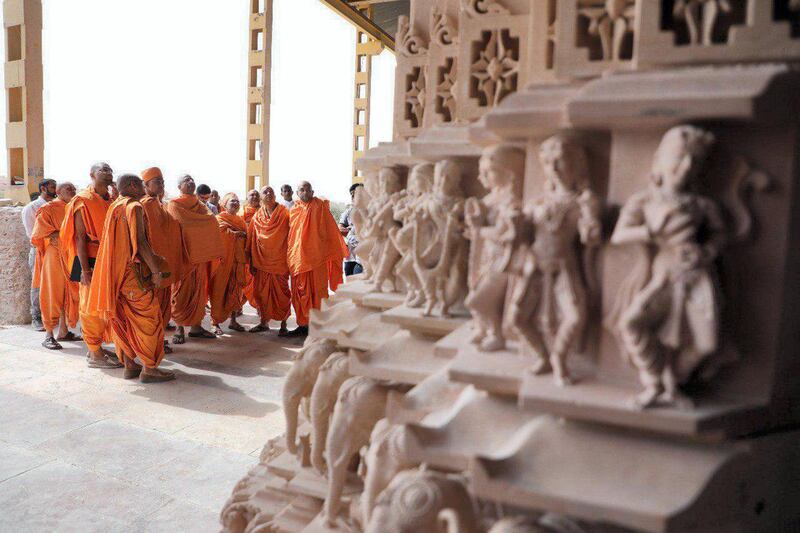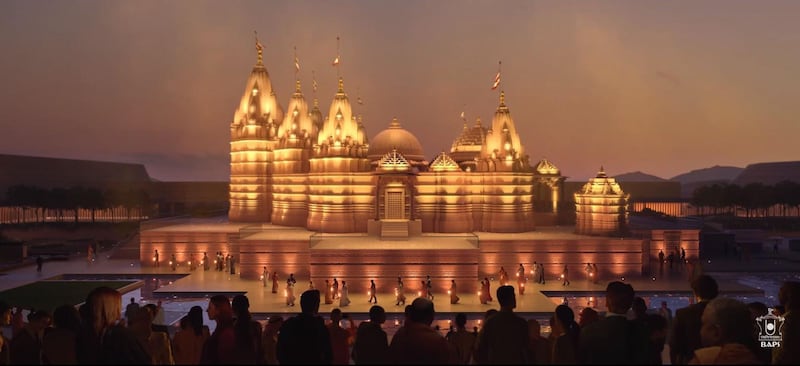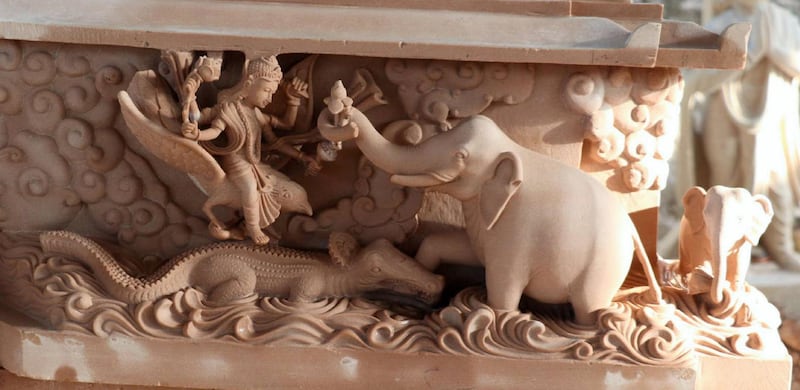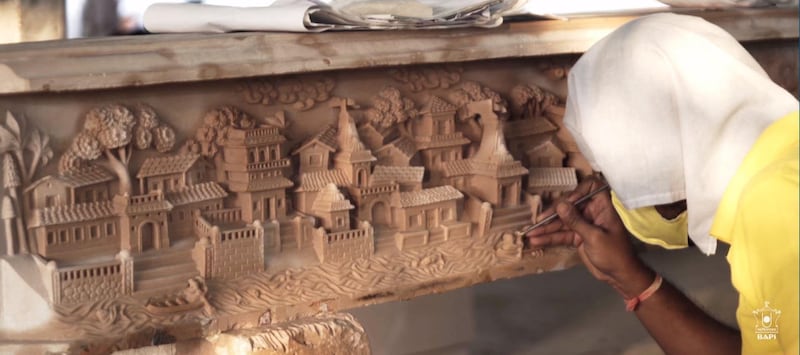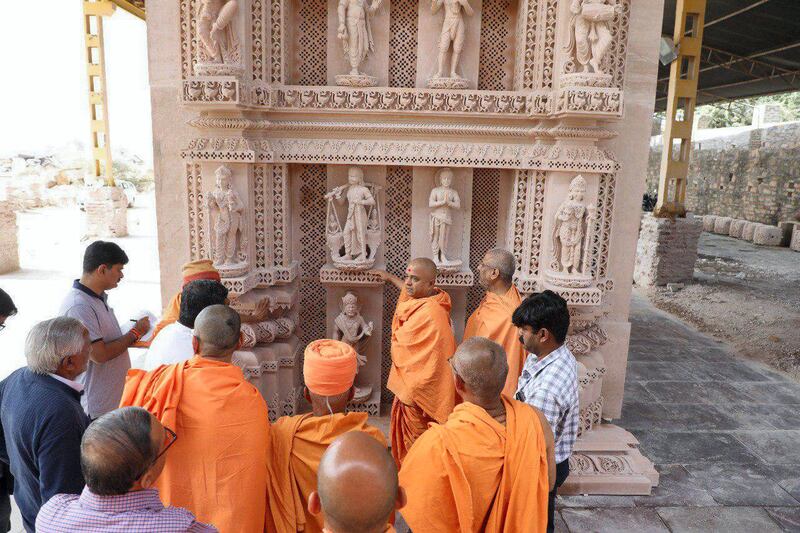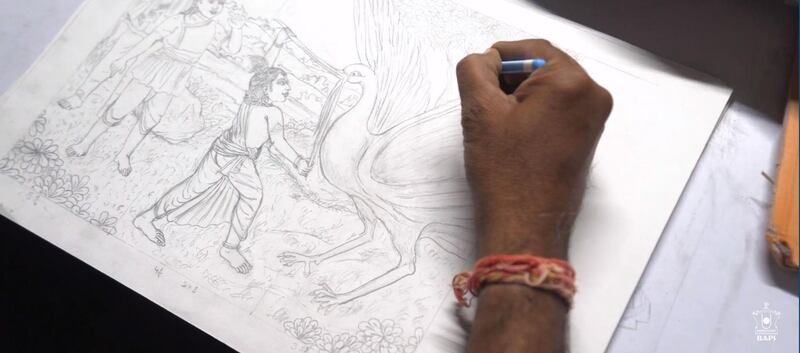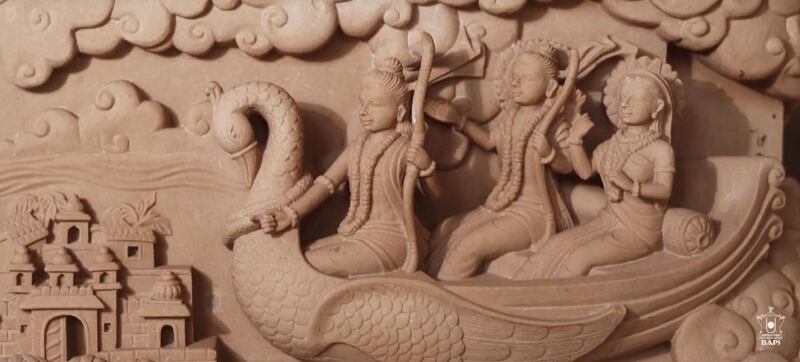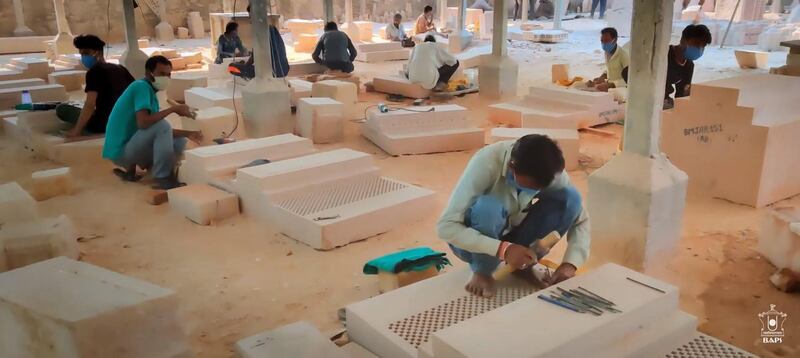Thousands of workers in India and the UAE are laying the foundations for Abu Dhabi’s first traditional Hindu temple.
Construction is gathering pace on the striking place of worship, which will admit people of all faiths as a gesture of harmony.
In the capital’s Abu Mureikha area, hundreds of construction staff receive guidance on site from members of Baps Swaminarayan Sanstha, the organisation building the Dh450 million ($122.5m) temple, on how to make its bold plans a reality.
And in Rajasthan, 2,000 kilometres away, about 2,000 sculptors use chisel and hammers to carve figures of Hindu deities in sandstone and marble.
Their handiwork will be transported in batches from April to be assembled at the sprawling site, off Sheikh Zayed Road, like pieces of a giant jigsaw.
"The beauty or magic of this temple is not just the carving or the meaning behind the carving, but it is that it's being hand-carved by artisans back in India," said Pranav Desai, a volunteer at Baps Hindu Mandir.
“This is going to be a unique feature, which is going to revive 10,000 years of art and architecture here in the UAE.
“The temple will welcome people of all faiths from all around the world to help them understand the Hindu tradition, as well as celebrate the values of tolerance, peace and harmony among all the communities within UAE.”
By the end of this year, the temple will begin to take shape.
Its exterior will have pink sandstone from Rajasthan and the interiors will be panelled in white Italian marble.
The temple and its visitor centre are expected to open by 2023, in the first phase of the ambitious development.
The vast complex, spread across 55,000 square metres, will include a large amphitheatre, a gallery, a library, a food court, a majlis and two community halls with space for 5,000 people. It will also have gardens and children’s play areas.
An additional 53,000 square metres will be allocated for two helipads and parking for 1,200 cars and 30 buses.
In line with traditional temple architecture, the structure is being built without steel or iron.
The Baps Swaminarayan Sanstha believes that steel corrodes stone and reduces a structure’s lifespan. Usually temples made out of stone last more than 1,000 years.
Another highlight of the temple will be its seven spires representing the seven emirates of the UAE. Baps priests said the temple will be a symbol of the UAE’s values of inclusion and tolerance of all faiths and cultures.
“Each of the spires will contain stories from the life of deities. The facade wall and the stairs of the temple will have cultural and moral stories from various countries around the world,” Mr Desai said.
“The flora and the fauna carved in the Abu Dhabi temple will represent God’s gift of nature. They will express the harmony between plants and animals from India, UAE and from countries around the world.
“The interiors of the temple will have stone tapestries, layered stone carvings, ceilings with pillars and special windows. The temple will also have a central dome through which the sunlight can stream in.”
